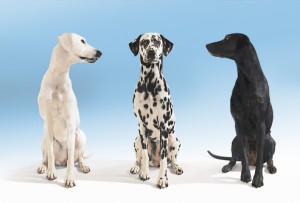Here is a portion of the Adversity Quotient Resolution chapter from my new book RESOLVED: 13 Resolutions for LIFE.
Learned Helplessness, by definition, is a learned behavior; therefore, it can also be an unlearned behavior.
This is exactly what leaders do for other people, helping them unlearn poor attitudes, expectations, and thoughts.
Let’s make 2012 the year you breakthrough, leaving learned helplessness and mediocrity behind!
Sincerely, Orrin Woodward
One such compromise was discovered Dr. Martin E. P. Seligman, in 1965, when he stumbled across what the American Psychological Association has called the Landmark Theory of the Century – Learned Helplessness.
Learned Helplessness is a belief that what a person does cannot alter his outcomes, that somehow life’s cards are stacked against him.
Seligman’s studies created a revolution in the psychology field, displacing Skinner’s hopeless behaviorism (Stimulus controls response).
In Pavlov’s original study, where he rang the bell and provided food, showing that dogs would salivate after ringing the bell, seemed to prove that humans only responded to the stimulus provided.
From this experiment, Pavlov, and later Skinner, concluded that man lived by learned behaviors only, leaving no room for thinking, responsibility, changing, and therefore, no room for destiny.
But Seligman’s experiments altered the field forever with the hopeful cognitive psychology revolution (thinking determines behavior).
His experiments revealed, in other words, that what we do matters.
Seligman tested three groups of dogs on Pavlov’s foundation, but with a key variation in the stimulus.
Group A dogs were harnessed individually, hearing a bell tone and receiving a harmless electric shock afterwards.
Group A dogs could stop the shock by pressing a bar with their nose, which they quickly learned to do.
Group B dogs, on the other hand, heard the bell tone and received the shock, but had no ability to stop the electric shocks.
Lastly, Group C received no shocks at all, merely heard the bell tone.
The breakthrough occurred on the second day of testing when each of the dogs from the previous day were randomly placed into a shuttle box; a box with a low barrier down the middle.
One at a time the dogs were place in the shuttle box.
Each dog heard the bell tone and received the shock, but the different responses of the three groups initiated the cognitive revolution.
Both Groups A and C quickly jumped the middle barrier, eliminating the discomfort of the electric shock.
But Group B, contrary to expectations, did not attempt to jump over the barrier, instead the dogs merely crouched down and whimpered.
Stoltz describes the breakthrough theory,
“What Seligman and others discovered is that these dogs had learned to be helpless, a behavior that virtually destroyed their motivation to act. Scientist have discovered that cats, fish, dogs, rats, cockroaches, mice, and people all are capable of acquiring this trait. Learned helplessness is simply internalizing the belief that what you do does not matter, sapping one’s sense of control.”
When a person believes that he cannot change his situation, he won’t even try, becoming hopeless because he believes he is helpless.
On the other hand, people can change nearly anything with the right knowledge applied consistently and persistently.
Learned helplessness, because it destroys this hope for change, must be exposed for the lie that it is, teaching one’s self and others that change is possible only when a person believes that he can change.
Indeed, leaders must rid themselves and their teams from Learned Helplessness as its acid is fatal to all personal growth.
Another compromise that leads to failure and despair is an improper response to the pain inherent in the process of growth.
There are actually two types of pain: one comes from the inside due to the change process; the other comes from the outside due to criticism from those unwilling to make the same changes.
Hope is the only fuel capable of burning through both types of pain.
Without hope, either of the pain versions will trump one’s willingness to endure, instead choosing to stop the pain by quitting the journey.
Author Robert Grudin writes,
“One might reply that most people who surrender simply lack the ability to get very far. But it is more accurate to say that ability and intelligence, rightly understood, include a readiness to face pain, while those characteristics which we loosely term ‘inadequacy’ and ‘ignorance’ are typically associated with the avoidance of pain.”
When the pain reaches a certain threshold, everything inside of a person screams for relief, but champions, people with high AQ, persevere.
Pain is overcome through the continuous focus on one’s purpose.
Moreover, achieving greatness will require a faith that can move mountains, an AQ to endure the rising pain in the process, eventually reaching levels of success that more timid souls refuse to believe possible.
****************************
 Orrin Woodward is the co-founder of TEAM, a leadership development and training company, and the New York Times best-selling co-author of Launching a Leadership Revolution.
Orrin Woodward is the co-founder of TEAM, a leadership development and training company, and the New York Times best-selling co-author of Launching a Leadership Revolution.
Named by the International Association of Business as a Top 10 Leadership Guru, he is dedicated to building leaders and entrepreneurs and promoting freedom and prosperity.
Orrin blogs regularly at Orrin Woodward. He lives in Port St. Lucie, Florida with his wife and four children.







Speak Your Mind
You must be logged in to post a comment.